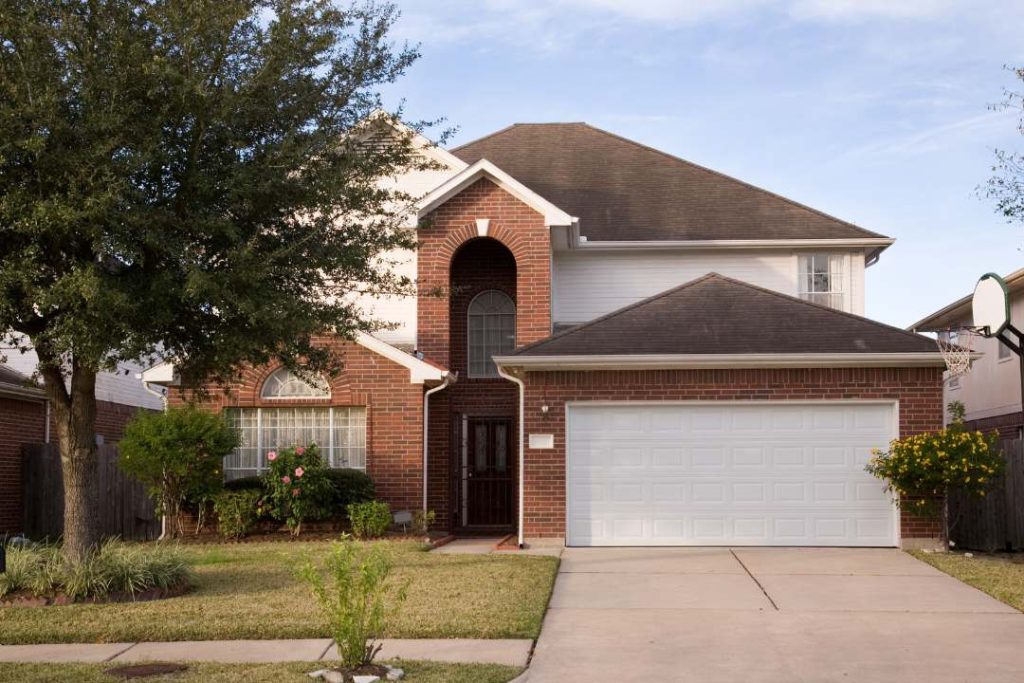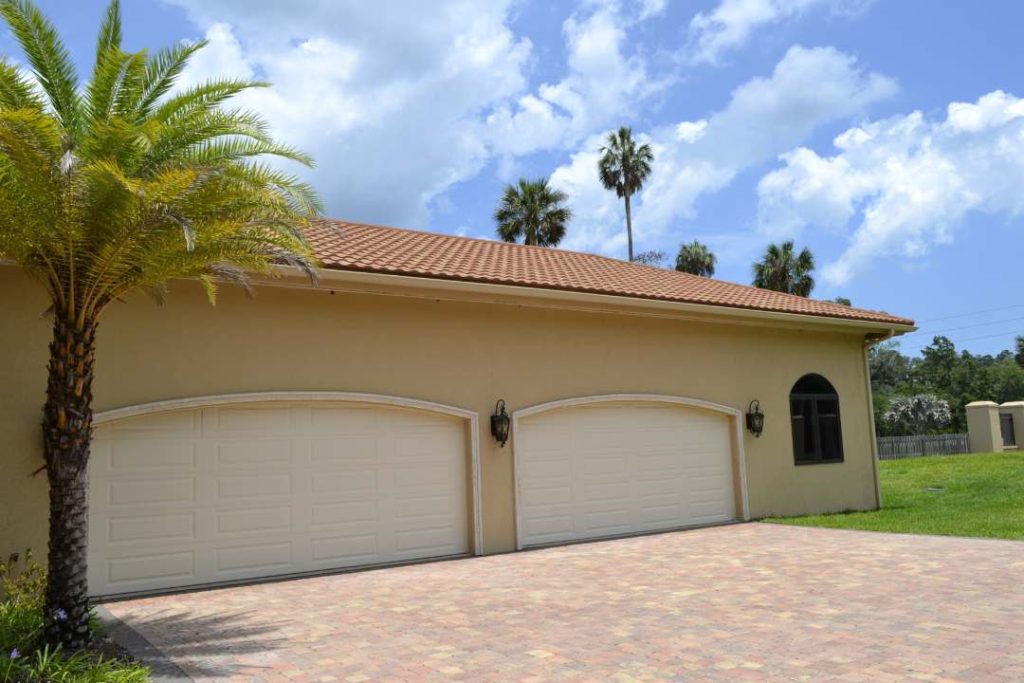
Broken garage door springs are a hidden hazard because they store high tension and can fail without warning, causing sudden door drops, flying metal, and severe injuries if mishandled. Ignoring a worn spring or attempting a DIY fix can turn a minor issue into a major safety emergency, which is why professional service is essential the moment you suspect a problem.
Why springs are dangerous
Garage door springs counterbalance the weight of a heavy door by storing significant potential energy, and when that energy releases unexpectedly during a break, it can propel parts and drop the door with crushing force. A failure can create projectile risks from recoiling coils and components, along with pinch-point hazards anywhere moving parts interact, especially while the door is in motion. Because wear occurs gradually inside tightly wound steel, the danger is often invisible until a loud snap or sudden malfunction occurs, which makes routine professional inspections critical.
What springs actually do
Your opener doesn’t lift the door alone—springs do the heavy work by balancing the door’s weight so the motor only guides motion, which is why doors feel impossibly heavy when a spring breaks. Without that counterbalance, the door may slam shut or refuse to open safely, and forcing it can twist tracks, snap cables, or damage the opener. Attempting to open or close a door with a broken spring can also lead to severe personal injury because the remaining components aren’t designed to bear that unbalanced load.
Clear warning signs of a failing spring
-
A loud bang in the garage—often described like a gunshot—commonly indicates a torsion spring has snapped.
-
The door feels unusually heavy, won’t lift more than a few inches, or the opener strains and stalls during operation.
-
The door looks crooked or jerky while moving, signaling an uneven counterbalance or a cable that has lost tension.
-
You see a visible gap in a torsion spring coil, frayed lift cables, or rust along the spring and hardware.
-
The door starts to close but reverses, or safety systems seem inconsistent, indicating deeper balance and hardware issues.
If a spring breaks—do this first
-
Stop using the opener immediately to prevent the motor from burning out and to avoid forcing the unbalanced door.
-
Keep people and pets away from the area and do not walk under a compromised door, even if it looks stationary.
-
If the door is down, leave it down and do not attempt to lift it manually, as the full door weight can cause injury.
-
If the door is stuck open, do not pull the red emergency release while the door is up, as it can free-fall; instead, call a pro for safe lowering.
-
Schedule emergency repair with a trained technician who has the tools and procedures to stabilize and replace springs safely.
What never to do
Never attempt DIY spring replacement, as mishandled tension can cause severe lacerations, fractures, or worse, even for experienced DIYers. Never try to “help” the opener by forcing the door up or down, since extra torque can shear gears, bend rails, and increase the chance of the door dropping unexpectedly. Never leave the door propped open with a broken spring because it poses security risks and can fall if props shift or fail; secure professional assistance instead.
The real risks explained
When a torsion or extension spring breaks, stored energy may recoil violently, turning coils and hardware into projectiles with the power to puncture, cut, or damage property. Without counterbalance, a moving door can drop and crush hands, feet, or objects beneath it, particularly if someone pulls a release at the wrong time. Even routine motion introduces pinch points where fingers or tools can be trapped, which is why only trained techs should work around energized springs.
Safe handling until help arrives
If the door is closed, leave it closed and unplug the opener to prevent anyone from accidentally activating it while you wait for service. If the door is partially open, do not try to close it alone; a professional can safely clamp tracks, relieve tension, and lower the door without introducing drop hazards. Keep children away from the garage and post a note on any wall button to prevent use until the system is inspected and repaired.
Professional repair vs. DIY
Professionals use winding bars, calibrated tools, containment practices, and tested procedures to neutralize tension before removing and installing springs. They also evaluate related components—cables, drums, bearings, end bearings, center brackets, and the opener—to ensure the system is balanced and protected against premature failures. A proper repair includes testing door balance, travel limits, and safety reversals so the door neither free-falls nor overdrives the opener after service.
Maintenance that prevents emergencies
Annual professional inspections can catch fatigue, rust, misalignment, and cable wear before they escalate into a sudden failure. Technicians can lubricate moving metal parts, verify spring balance and cycle performance, and realign sensors so the safety systems remain reliable. Proactive care reduces the risk of emergency breakdowns and extends the life of the entire door system by maintaining safe, even operation.
Common homeowner questions
Is it safe to use a garage door with a broken spring? No—without counterbalance the system is unsafe to operate and should be serviced before any further use. Can you open a garage door when the spring breaks? Do not attempt it, as even a partially functioning spring can release energy unpredictably and cause injury. Why do springs break? Normal wear from repeated cycles and age-related metal fatigue are the primary causes, often compounded by corrosion or lack of maintenance.
What to expect during a pro visit
A trained tech will secure the door, relieve residual tension, replace worn springs with properly sized and rated parts, and reset balance and opener limits. The visit typically includes inspection of cables, drums, bearings, and safety sensors to ensure smooth and safe motion before the system is returned to service. After testing, the door should lift smoothly by hand, the opener should operate without strain, and safety reverse functions should respond correctly to obstructions.
Safety tips for Scottsdale homes
Keep wall controls out of children’s reach and educate household members to never walk beneath a moving door or pull the release when the door is open. Add a reminder to schedule an annual inspection before peak usage seasons so minor wear doesn’t become a surprise failure at an inconvenient time. If you hear unusual noises, notice sluggish travel, or see visible hardware wear, stop using the system and arrange a same-day evaluation.
How to choose the right repair partner
Look for rapid-response service, transparent safety-first procedures, and technicians trained to handle high-tension spring systems with proper tools. Prioritize companies that include a complete door and opener safety check so the repair restores both balance and protective features, not just the broken part. Favor providers who educate you on safe operation and maintenance, including when not to use the emergency release and how to recognize early warning signs.
When to call immediately
Call for emergency service if the spring has snapped, the door is stuck open, the opener strains or stalls, or you see frayed cables or loose hardware. Stop all use and keep the area clear until a pro arrives, as the risk of crush injuries or sudden drops increases when the system is unbalanced. Do not try temporary fixes like clamping the track or propping the door with objects, because shifting loads can cause unexpected failure.
Recommended in Scottsdale: High Grade Garage Doors
For fast, safety-first help with broken springs anywhere in the Scottsdale area, contact High Grade Garage Doors for professional diagnosis, balanced spring replacement, and a full-system safety check. Call High Grade Garage Doors at (602) 837-1888 to schedule same-day service and get your door operating smoothly and safely again.


